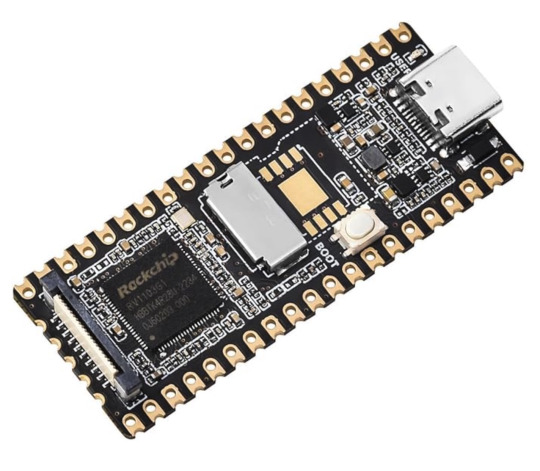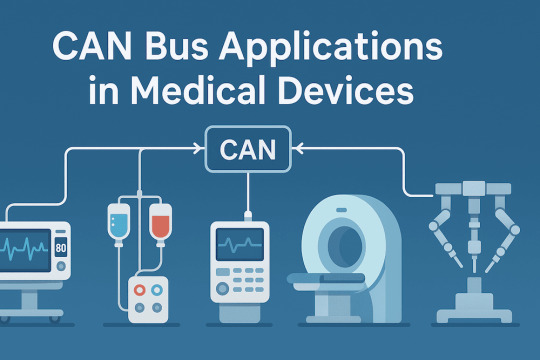#Embedded Systems
Explore tagged Tumblr posts
Text
My mentor for electronics and embedded systems is sooo good at teaching istg. I walked up to this man after his class and I asked him and he explained the basics in 15minutes and when I thanked him he said “thank YOU for your queries “ bro he almost made me tear up cuz Engineering professors/mentors have been real rough 🙌
6 notes
·
View notes
Text
2 notes
·
View notes
Text
Should I actually make meaningful posts? Like maybe a few series of computer science related topics?
I would have to contemplate format, but I would take suggestions for topics, try and compile learning resources, subtopics to learn and practice problems
#computer science#embedded systems#linux#linuxposting#arch linux#gcc#c language#programming#python#infosecawareness#cybersecurity#object oriented programming#arduino#raspberry pi#computer building#amd#assembly#code#software#software engineering#debugging#rtfm#documentation#learning#machine learning#artificial intelligence#cryptology#terminal#emacs#vscode
4 notes
·
View notes
Text

Linux Micro Development Board, Integrates ARM Cortex-A7/RISC-V MCU/NPU/ISP Processors
The LuckFox Pico represents a cost-effective Linux micro development board based on the Rockship RV1103 chip, which supplies a straightforward and efficient development platform for embedded system designers. It supports a variety of interfaces, including MIPI CSI, GPIO, UART, SPI, I2C, USB, and more. Developing applications is convenient, and debugging is quick.
3 notes
·
View notes
Text
youtube
The Indian Institute of Embedded Systems (IIES) is renowned as one of the best training institutes in Bangalore for embedded systems. With a strong focus on practical training and industry relevance, IIES offers comprehensive courses that equip students with the skills needed to excel in the field. The institute boasts experienced trainers who are industry experts, ensuring that students receive top-notch guidance. They provide state-of-the-art lab facilities and hands-on projects to enhance practical learning. Additionally, IIES has collaborations with reputed companies, offering students opportunities for internships and job placements. With a strong track record of success and a commitment to student outcomes, the Indian Institute of Embedded Systems stands out as the premier choice for aspiring embedded systems professionals in Bangalore.
Visit https://iies.in/ to know more
2 notes
·
View notes
Text
C vs Python for Embedded Systems Programming – Which Is Better?
When it comes to embedded systems programming, C is traditionally favored for its speed, low-level hardware access, and memory efficiency. It allows precise control over system resources, making it ideal for real-time applications. However, Python is gaining traction for prototyping and higher-level logic due to its simplicity and readability. While Python is easier to learn and quicker for development, C remains the go-to choice for performance-critical tasks. For a solid foundation, enrolling in an Embedded Systems course is highly recommended.

0 notes
Text
Embedded Linux for Firmware Development

Explore how Monarch Innovation leverages Embedded Linux for advanced firmware development. From custom board support packages (BSPs) to real-time operating systems and device drivers, we deliver robust, scalable, and secure embedded solutions across industries. Enhance your embedded systems with expert Linux-based firmware development that ensures flexibility, reduced time-to-market, and seamless hardware integration.
#embedded systems#firmware development#embedded software development#embeddedsystems#embedded firmware development
0 notes
Text

Our online embedded course is designed for students, engineers, and tech enthusiasts who want to learn how embedded systems work in real life. This beginner-friendly course covers microcontrollers, C programming, sensors, IoT, and hands-on projects.
Whether you're aiming for a job in the electronics industry or want to build your own smart devices, this course gives you the skills and confidence to get started. Learn at your own pace with expert support and practical examples.
1 note
·
View note
Text
B.Tech in Electronics Engineering: Courses, Careers & Future Scope Explained
In today’s hyper-connected world where technology evolves faster than we can keep up, one engineering discipline remains at the core of it all—Electronics Engineering. From smartphones and satellite systems to electric vehicles and smart cities, the fingerprints of electronics engineers are everywhere.
A B.Tech in Electronics Engineering is not just another undergraduate degree. It’s a gateway to a future shaped by innovation, automation, and global impact.
Whether you’re a student planning your engineering path, a parent looking for clarity, or a professional exploring career pivots, this comprehensive guide will walk you through the course structure, career scope, top recruiters, and global opportunities available with a B.Tech in Electronics Engineering.
What is B.Tech in Electronics Engineering?
B.Tech in Electronics Engineering is a four-year undergraduate program that focuses on the principles and applications of electronics, electromagnetism, circuit design, communication systems, embedded systems, and signal processing.
It merges theoretical knowledge with practical lab-based learning, preparing students for diverse industries such as telecommunications, defense, manufacturing, IT, healthcare, and research.
🎓 Explore more academic insights and counseling services at Edunet Educare
Why Choose Electronics Engineering?
Ubiquity of Electronics: Everything from your TV to Tesla runs on electronics.
Diverse Career Options: Graduates can work in design, development, production, testing, or even sales and consultancy.
R&D Opportunities: With AI, robotics, and IoT booming, R&D roles are plentiful.
Government & Public Sector Jobs: A wide range of jobs await in ISRO, DRDO, BEL, and more.
International Relevance: The skills learned are transferable globally.
In short, it's a future-proof degree in a digitally driven world.
Eligibility Criteria
To enroll in a B.Tech in Electronics Engineering program in India, aspirants typically need:
Completion of Class 12 with Physics, Chemistry, and Mathematics (PCM)
A qualifying score in entrance exams such as:
JEE Main / Advanced
State-level entrance tests (MHT CET, KCET, WBJEE, etc.)
Private university exams (VITEEE, SRMJEEE, etc.)
Core Subjects You’ll Study
Here’s a snapshot of some foundational and advanced subjects included in the Electronics Engineering curriculum:
📘 First Year:
Engineering Mathematics
Engineering Physics/Chemistry
Basics of Electrical & Electronics Engineering
Programming in C/C++
Engineering Graphics
⚙️ Second Year:
Analog & Digital Electronics
Network Theory
Signals and Systems
Data Structures
Electronic Devices and Circuits
📡 Third Year:
Microprocessors and Microcontrollers
Control Systems
Communication Engineering
Embedded Systems
VLSI Design
🔧 Final Year:
Industrial Training / Internship
Major Project
Electives (like Robotics, IoT, AI in Electronics)
Laboratory work, mini-projects, seminars, and workshops play a huge role in enhancing real-world skills.
Top Colleges Offering B.Tech in Electronics Engineering (India)
IITs (Delhi, Bombay, Kharagpur, etc.)
NITs (Trichy, Surathkal, Warangal, etc.)
BITS Pilani
Delhi Technological University (DTU)
VIT Vellore
SRM Institute of Science and Technology
Each institution has its own admission procedure, faculty expertise, placement track record, and industry tie-ups.
Career Opportunities After B.Tech in Electronics Engineering
The career landscape for electronics engineers is vast and continues to evolve with technological advancements. Some key career paths include:
🖥️ Design & Development Engineer
Work with product teams to design consumer electronics, industrial machines, or automotive components.
📶 Communication Engineer
Join telecom giants like Airtel, Jio, or Vodafone to develop and maintain communication networks.
⚙️ Embedded Systems Engineer
Program microcontrollers and design embedded solutions for appliances, vehicles, and robots.
🛰️ Satellite & Aerospace Engineer
Work in space research, satellite design, and mission planning at ISRO or private space tech firms.
💻 Software Developer (Electronics-based)
Many electronics engineers transition into software development, especially in hardware-software integrated projects.
🏢 PSU/Government Jobs
Crack GATE or other exams to work with DRDO, ISRO, BHEL, ECIL, or Indian Railways.
🌍 International Jobs
With relevant certifications and experience, engineers can work in the US, Germany, Japan, and other tech-heavy nations.
💼 Curious about career counseling or course selection? Visit Edunet Educare for personalized guidance.
Higher Studies & Certifications
Electronics Engineering opens doors to prestigious postgraduate paths:
M.Tech / MS in Electronics & Communication / VLSI / Embedded Systems
MBA in Technology Management or Operations
Certifications in:
Embedded Systems (ARM, STM32)
IoT and AI (Coursera, edX)
MATLAB & Simulink
PCB Design and Circuit Simulation
Top Recruiters in Electronics Engineering
India’s growing electronics and semiconductor ecosystem has led to booming demand. Here are some top recruiters:
Intel
Texas Instruments
Qualcomm
Samsung R&D
TCS
Wipro
Infosys
ISRO
DRDO
L&T
BEL
Reliance Jio
Nokia
CISCO
Job roles vary from VLSI designers to testing engineers, field application engineers, and hardware developers.
Skills That Set You Apart
To thrive in the electronics field, complement your academic degree with the following:
Proficiency in programming (C/C++, Python, Verilog)
Knowledge of PCB designing tools like Eagle or Altium
Understanding of communication protocols (UART, SPI, I2C)
Problem-solving and logical thinking
Ability to read datasheets and design technical documentation
Future Scope & Emerging Trends
The landscape of electronics engineering is transforming rapidly. New-age domains gaining traction include:
Internet of Things (IoT)
Artificial Intelligence & Machine Learning in Hardware
Smart Grids & Renewable Energy Systems
Electric Vehicle Design
VLSI & Semiconductor Manufacturing
Autonomous Systems & Robotics
With India investing heavily in indigenous chip-making and global tech giants expanding operations, electronics engineers are in higher demand than ever before.
Conclusion: A Degree That Powers Innovation
A B.Tech in Electronics Engineering isn’t just about learning circuits and codes. It’s about being at the frontline of technological revolution—designing solutions that improve lives, create smarter cities, and push boundaries in space, healthcare, and industry.
If you're passionate about electronics, love solving problems, and dream of a career that combines creativity with cutting-edge tech, this is your calling.
🌐 Ready to explore the world of electronics engineering? Get expert counseling and curated content at Edunet Educare
#B.Tech in Electronics Engineering#Electronics and Communication#Engineering Courses India#Careers in Electronics#Top Engineering Branches#Edunet Educare#Electronics Career Scope#GATE Exam#Embedded Systems#IoT in Engineering#Best Colleges for B.Tech#PCB Design#VLSI Engineering#Jobs for Electronics Engineers#Electronics Government Jobs#Tech Education India#STEM Courses#Engineering Admissions#Career Counseling India#Future of Electronics
0 notes
Text
How BITSILICA Drives Innovation in Embedded Systems and VLSI"
BITSILICA is at the forefront of transforming the semiconductor industry with innovative design services that span VLSI, embedded systems, and AI-driven solutions. With a global presence and a team of over 500 skilled engineers, BITSILICA delivers end-to-end semiconductor expertise—from ASIC and SoC design to FPGA development and physical design. Specializing in high-performance technologies for data centers, 5G, IoT, and automotive applications, BITSILICA partners with industry leaders like AMD and Samsung to power the next generation of cutting-edge solutions worldwide.

1 note
·
View note
Text
Hinduja Tech has experience in embedded and electronics engineering for both hardware and software development. We have delivered projects for leading OEMs and Tier-1s in emerging domains of electric vehicles (e-powertrain, ADAS, body electronics, cluster and chassis systems by ensuring reliable, safe and secure aspects).
1 note
·
View note
Text
Here is a cool blog post with hardware hacking tool suggestions. I would say it's fairly beginner friendly.
1 note
·
View note
Text

CAN Bus Applications in Medical Devices: Precision Communication in Critical Environments
Discover how CAN Bus technology is revolutionizing medical device communication. Explore real-world examples like infusion pumps, ventilators, and surgical robots, and learn why CAN is ideal for critical healthcare systems.
#can bus#medical devices#can fd#embedded systems#healthcare#medical equipment#surgical robots#ventilator
0 notes
Text
Why does digital elecronics is important for engineering?
Digital electronics is super important in engineering for a bunch of reasons—it's pretty much the backbone of modern technology. Digital electronics powers everything from smartphones and computers to cars and medical devices. Engineers across disciplines need to understand it to design, troubleshoot, or innovate with modern systems.

Digital systems work with binary signals (0s and 1s), Less sensitive to noise and signal degradation. Easier to design for precise and repeatable performance.

GET CIRCUIT DESIGNING VIDEO TUTORIAL 👈.
#crank shaft#engine mechanism#four stroke engine#mechanical arms#mechanical engineering#mechanical parts#two stroke engine#digital electronics#digital circuit#digital circuit design#iot circuits#integrated circuits#embeddedsystems#embedded circuit#embedded systems
0 notes
Text
What are power optimization techniques in embedded AI systems?
Power efficiency is a critical concern in embedded AI systems, particularly for battery-operated and resource-constrained devices. Optimizing power consumption ensures longer operational life, reduced heat dissipation, and improved overall efficiency. Several key techniques help achieve this optimization:
Dynamic Voltage and Frequency Scaling (DVFS): This technique adjusts the processor’s voltage and clock speed dynamically based on workload requirements. Lowering the frequency during idle or low-computation periods significantly reduces power consumption.
Efficient Hardware Design: Using low-power microcontrollers (MCUs), dedicated AI accelerators, and energy-efficient memory architectures minimizes power usage. AI-specific hardware, such as Edge TPUs and NPUs, improves performance while reducing energy demands.
Sleep and Low-Power Modes: Many embedded AI systems incorporate deep sleep, idle, or standby modes when not actively processing data. These modes significantly cut down power usage by shutting off unused components.
Model Quantization and Pruning: Reducing the precision of AI models (quantization) and eliminating unnecessary model parameters (pruning) lowers computational overhead, enabling energy-efficient AI inference on embedded systems.
Energy-Efficient Communication Protocols: For IoT-based embedded AI, using low-power wireless protocols like Bluetooth Low Energy (BLE), Zigbee, or LoRa helps reduce power consumption during data transmission.
Optimized Code and Algorithms: Writing power-efficient code, using optimized AI frameworks (e.g., TensorFlow Lite, TinyML), and reducing redundant computations lower energy demands in embedded AI applications.
Adaptive Sampling and Edge Processing: Instead of continuously transmitting all sensor data to the cloud, embedded AI systems perform on-device processing, reducing communication power consumption.
Mastering these power optimization techniques is crucial for engineers working on intelligent devices. Enrolling in an embedded system certification course can help professionals gain expertise in designing efficient, low-power AI-driven embedded solutions.
0 notes
Text
Embedded System Course
An embedded system course offers hands-on training in designing and programming microcontroller-based systems. It covers hardware-software integration, real-time operating systems, and interfacing techniques. Ideal for electronics and computer science enthusiasts, the course prepares learners for careers in automation, robotics, IoT, and consumer electronics.
0 notes